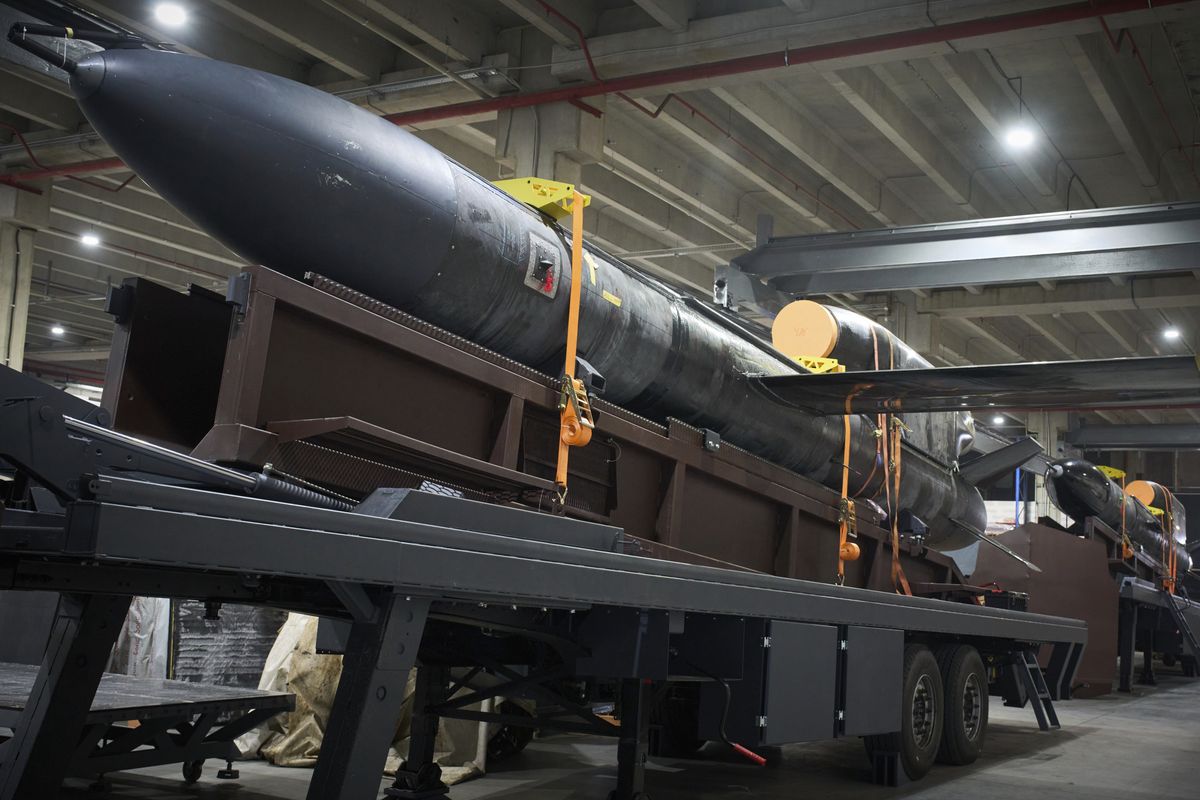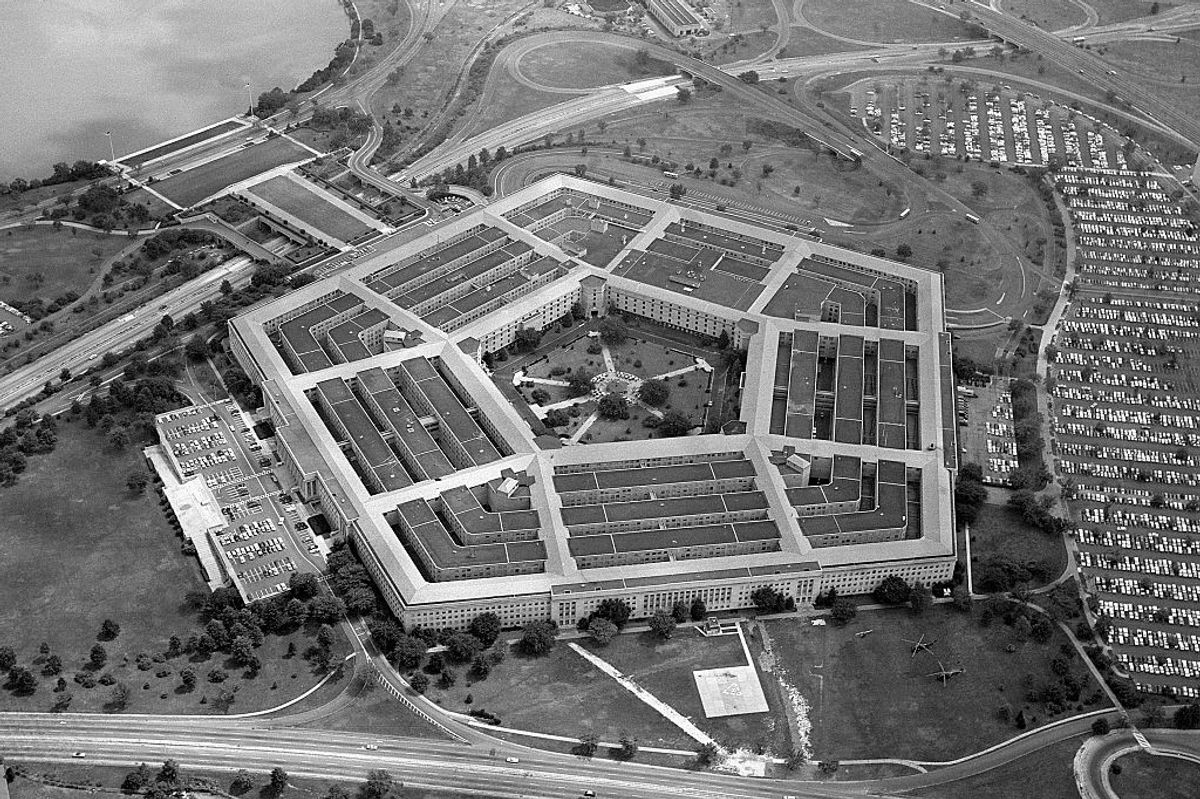DEEP DIVE – Often lost in the Trump administration's on-again, off-again offer to deliver Tomahawk missiles to Ukraine is the proposed deal that would see Kyiv supply military technology to Washington, rather than the other way around. It’s a potential military and political boon to Ukraine, and a reflection of the remarkable speed and quality of Ukraine’s defense-sector innovation.
“Ukraine now has technologies that have been proven to be effective against a peer adversary – namely Russia,” Samuel Bendett, a Russia expert at the Center for Naval Analyses Russia Studies Program, told The Cipher Brief. “These are not just concepts. These are not just prototypes. These are actual proven, battlefield-tested technologies. And they are in demand.”
President Volodymyr Zelensky first proposed what he called the “mega-drone deal” with the U.S. in July, calling it a “win-win” arrangement under which the U.S. would gain Ukraine’s battlefield‑tested drones and technology, and his country would get a new stream of American military aid. The Tomahawks were to have been part of the deal, but while the Oct. 17 Trump-Zelensky White House meeting appeared to close the door on that possibility, Zelensky said he had held talks on the broader deal with U.S. officials and leaders of Raytheon and Lockheed Martin.
Back in Kyiv, Zelensky said he had made the case that the war has provided an unparalleled testing ground for Ukraine’s arsenal of new drone weapons. “The U.S. has a large industry,” he said, “yet the industry itself says: ‘We don’t have your practice today, and undoubtedly your drones are the best today’.”
Defense tech and security experts have raved for years about the scope and speed of Ukraine's defense innovation. At last week’s Cipher Brief 2025 Threat Conference, former CIA Director Gen. David Petraeus spoke of the “staggering” scale of Ukraine’s drone production, and a gap between Ukraine’s pace of innovation and U.S. defense preparedness.
“We're not responding rapidly enough to that in the United States,” Gen. Petraeus said. “Keep in mind we're manufacturing maybe 300,000-400,000 drones in the United States. The Ukrainians alone are manufacturing 3.5 million.”
Zelensky’s challenge now is to leverage that success to get his “mega-drone deal” done – and to turn his country from a recipient of U.S. military aid to a defense industry trading partner of Washington’s.
The Ukrainian Edge
In the three and a half years since Russia’s full-scale invasion, Ukraine has vaulted to the top tiers of global defense technology innovation – a warp-speed evolution from what Ukrainian member of parliament Oleksiy Goncharenko called “garage-scale” to “battlefield-scale” production of sophisticated, cutting-edge weaponry. An October Jamestown Foundation report says Ukraine now has "the world's most innovative defense sector."
The country’s greatest successes have come with drone weaponry. In the immediate aftermath of Russia’s February 2022 invasion, Ukraine welcomed deliveries of Turkish Bayraktar drones – what some called the saviour of Ukraine’s initial resistance – but from the start, the country’s tech and defense sectors went to work to boost their own UAV production.
“Drone factories cropped up in every garage across Ukraine once people started realizing the utility of drones and how important they would be,” Retired Chief Warrant Officer Joey Gagnard told The Cipher Brief conference.
Today the made-in-Ukraine arsenal features the FPV (“first person view”) attack drones, long-range strike UAVs, and an array of interceptor and underwater drones. On Oct. 22, Ukraine’s Security Service unveiled a new generation of “Sea Baby” naval drones that can travel nearly 1,000 miles and carry 4,000 pounds of cargo.
Goncharenko believes it was the underwater drones that first captured broad attention in the West, following sea-drone attacks that damaged or destroyed nearly a dozen Russian ships.
“It was an absolutely new chapter in maritime warfare and there was a lot of interest,” Goncharenko told The Cipher Brief. “It was clear that no other nation has this, and when you have something new and really effective, others will be interested.”
Certainly the U.S. is interested. In June, the White House issued an Executive Order aimed at boosting the American drone sector, and Secretary of the Army Dan Driscoll has spoken often of the need for the U.S. to learn from the Ukrainian experience.
“When you look at Ukraine and how the battle is being fought, it is no longer sufficient to have a long procurement process that takes two and a half years to get the first prototype, two more years to get it at scale, and then four years to get it in the hands of soldiers,” Driscoll told The War On the Rocks podcast. “Those eight years, contrasted with the two weeks right now that drones are being updated in Ukraine, have made it an imperative that either we do this now or we do it in the first six months of a conflict when American soldiers are losing their lives.”
Driscoll and others have highlighted Ukraine’s June “Spider Web” operation in which 117 FPV drones damaged more than 40 fighter jets at five Russian bases. “At a cost of a mere tens of thousands of dollars,” Driscoll said, “Ukraine inflicted billions in damage, potentially setting back Russia’s bomber capabilities for years.”
Beyond the weapons themselves, Western defense officials have taken note of Ukraine’s “Brave1,” a platform that encourages innovation and includes a digital procurement system under which frontline commanders can offer feedback on weaponry, and order drones directly from manufacturers, with delivery in as little as a week. That would be a stunningly fast rate of response for any military.
“Ukraine has created a very fast innovation cycle and one which I think is different from the typical approach both in the U.S. and other NATO countries” Andrew Radin, a Senior Political Analyst at RAND, told The Cipher Brief. “That quick-turn, decentralized approach is quite different and one that I think U.S. leaders are learning from. There's clearly an idea to draw inspiration from Ukrainian practices.”
According to several reports, senior U.S. military officers in Europe have studied the Brave1 system, which lists hundreds of Ukrainian drone weapons for sale. Ukrainian repair shops also provide rapid emergency help, keeping battlefield systems operational — another capability U.S. officials are hoping to replicate.
“We’re going to have to be more agile,” Randy George, the Army Chief of Staff, said in June. “Drones are going to constantly change…We’re going to need a lot more agility in how we buy things.”
The Cipher Brief brings expert-level context to national and global security stories. It’s never been more important to understand what’s happening in the world. Upgrade your access to exclusive content by becoming a subscriber.
Anatomy of a deal
The essence of the proposed “mega-drone deal” is simple – an exchange that brings high-demand weapons and technology to both sides.
The U.S. would acquire a range of Ukrainian drone weaponry — low‑cost “attritable” systems (i.e. drones that are expendable without great financial loss); cutting-edge counter-drone technologies; and above all, systems that have been tested and proven in ways that cannot possibly be replicated in the U.S.
“Ukraine has resources and education that the U.S. and other partners have not had,” Radin said. “And Ukraine, because of its wartime incentives, is pursuing products for the immediate current technology and challenges that they're facing, whereas Western industry and Western MODs [ministries of defense] have been trying to think forward and predict how we operate.”
“All the technology and weaponry that Ukraine brings to the table is combat proven, and that’s not something that can be said for a lot of American systems,” Bendett said. “The U.S. defense sector is very adaptable, but we don’t have that sense of urgency. Our back is not against the wall.”
Among the benefits for Ukraine are help in scaling its drone production, greater profits for its growing defense industries, and a more reliable supply of American air-defense and long-range weaponry. And – perhaps as important as anything — the less tangible benefit of a long-term defense partnership with the U.S.
“This deal is not just military, it’s political, because Ukraine needs U.S. support,” Bendett said. “You’re not just buying a weapon or a system. You’re buying political will, you’re buying alliances.”
“Every piece of our cooperation with the United States is valuable because for us, cooperation with the United States means building a relationship,” Goncharenko said. “We need this cooperation. So for us it's absolutely win-win.”
Zelensky and other Ukrainian officials have put the potential value of the U.S.-Ukraine defense trade in the tens of billions of dollars. In early October, a delegation led by Ukraine’s Deputy Defense Minister Serhii Boyev traveled to the U.S. to work out “technical” implementation details, and by the time of Zelensky’s visit, the two sides were said to be “finalizing a framework.” But officials on both sides have said it may take several months to bring a deal across the finish line.
Among details and questions to settle: Whether the U.S. would buy existing weapons or license Ukrainian designs — and if the latter, would the drones be manufactured in a joint partnership with Ukrainians? There is precedent for such partnerships; on Oct. 20, AIRO and the Ukrainian defense company Bullet announced a joint venture for the production of high-speed interceptor drones. Any U.S. purchase of existing Ukrainian drones would require vetting for any Chinese‑origin components, to satisfy U.S. export‑control protocols.
Meanwhile, the overall relationship – and President Trump’s own vagaries – hang over any potential arrangement. In the last month alone, the administration has swung repeatedly from seemingly pro-Ukraine views (i.e., the proposed Tomahawk delivery) to greater sympathy for Moscow (the proposed Budapest summit between Trump and Vladimir Putin) and back again. Among the Ukrainian hopes is that the drone-tech-for weapons deal would offer some insulation, the next time the pendulum of U.S. policy swings back towards Moscow.
“The drones are one of the ‘cards’ we do have,” Goncharenko said, a reference to the disastrous Feb. 28 Oval Office meeting at which Trump castigated Zelensky and told him, “You don’t have any cards.” He added that while he never doubted the skill levels in his country’s high-tech sector, he also could never have fathomed that Ukraine might one day produce weaponry that the U.S. would wish to buy.
“I couldn't imagine that Ukrainian defense technologies will be one of the most prominent on the planet. All of this was quite unimaginable,” Goncharenko said. And then he added, with a smile, “I think now Trump would not say you don't have any cards. We don't have many cards, but we do have some.”
Read more expert-driven national security insights, perspective and analysis in The Cipher Brief












